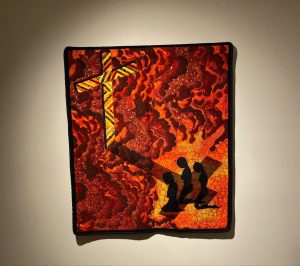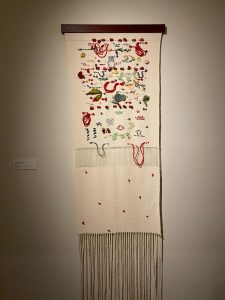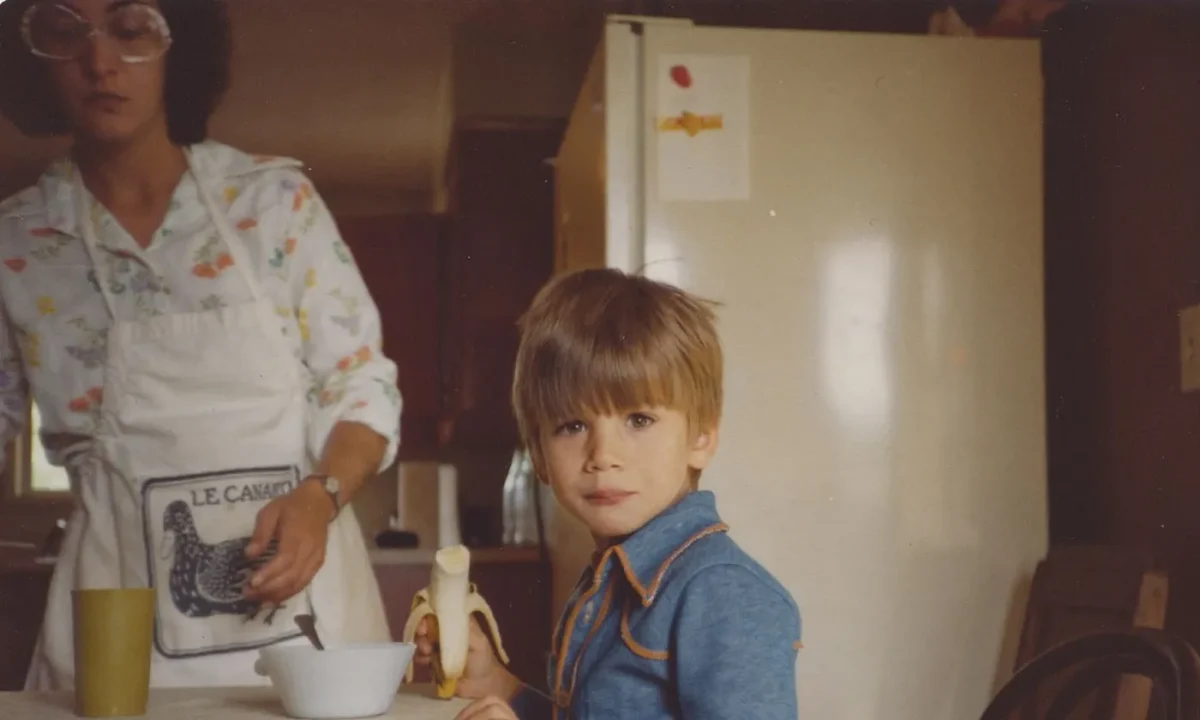Featuring works from six intergenerational artists, MOCRA’s new exhibition, ‘Open Hands: Crafting the Spiritual’, incorporates diverse perspectives on spiritual and religious experiences, which are highlighted in the museum’s mission, into an intimate and stunningly tangible experience.
Curated by René Paul Barilleaux, of the McNay Art Museum in San Antonio, the exhibition allows SLU students and the citizens of St. Louis to explore the boundaries of spiritual expression. Featured in the exhibit are the craft-works of Thomas Lanigan-Schmidt, who often utilizes materials such as tin foil and baking sheets to depict items and concepts from the Roman Catholic tradition; weavings by Jenelle Esparza, which employ natural imagery to invoke a sense of interconnectedness at the border between South Texas and Mexico; and two quilting works by Gwendolyn A. Magee, whose imagery explores the relationship of African-American culture to organized religion.
Also featured are two intricately crafted paper structures by Michael Veliquette as well as two sculptures by Beliz Iristay, whose use of ubiquitous construction materials such as bricks conveys a physical intermingling of faith traditions, and several screen prints from Gabriel Garcia Roman, who valorizes the stories and messages of LGTBQ+ figures through traditional iconographic imagery.
The exhibition, as stated in its Gallery Guide, hopes to “represent a range of religious practices and faith traditions while broadly focusing on history, social justice and personal identity,” while incorporating works made from common materials in order to, “take the works out of the often-rarified world of museums and galleries and open the art to audiences of all backgrounds and experiences.”
This vision is accomplished, primarily, through the curatorial choices of Barilleaux, who has made efficient and intriguing uses of the space in which the MOCRA is housed. Positioned in the depths of Fusz Hall, the MOCRA repurposed the chapel of the old Jesuit residence following SLU’s acquisition of the building in 1990 under the leadership of Fr. Terrence Dempsey.
Since the building was originally built in the 1950s, prior to the Second Vatican Council, the chapel required individual altars on which each priest could deliver mass on a daily basis. After the space’s repurposing into a museum, curators have faced a unique challenge: reconciling the vaulted, open space of the main chapel area with the smaller, accompanying altar spaces that line the lengthwise walls of the chapel. Barilleaux welcomed this challenge, seeing it as an opportunity to isolate the viewer and the artwork, hopefully prompting the viewer to reconsider their experience with the work itself.
“I really love the idea of the chapels, because the context of it being in a former church was very appealing,” Barilleaux said, “And then the fact that you could isolate an object and really have the viewer become present there with the objects. Often in a museum situation, you see the panorama all at the same time, right? Here is an opportunity to really have the viewer focus and force in ways, force them to focus, even allow them to sit and just contemplate. And so sort of the viewer, hopefully, or some of the viewers, will reimagine the process through the artist’s making in their studio, meditating, working, in a kind of a solitary experience. It kind of replicates that in a way.”

In addition to its purpose of isolation, this choice represents an important aspect of the exhibit: the tangible.
David Brinker, the director of MOCRA, believes that the exhibition, through its use of common materials, engages with the viewer in a different way than a painting within a typical display might. Referencing the quilts on display made by Gwendolyn A. Magee, he described the exhibition as, in part, blurring the long-held lines between High Art and Low Art, a distinction dating to Enlightenment thinking that attempts to separate the art of the masses from the art of culture.
“The quilts by Gwendolyn McGee, obviously, are very artistic, but so many families have a tradition of making quilts for each child and grandchild as they come along. I think there’s just something very tangible people connect with [in the exhibition]; it doesn’t feel as removed as a painting. It’s a little different experience.”

In surveying the works on display, the viewer is immersed in the history of the artwork; there is a definite sense that these works have been touched, molded, and shaped by the artist. In exploring this experience’s connection with the spiritual, “Open Hands” opens up the possibility for new viewings and interpretations of art’s role in the divine.
Admission to the MOCRA, at 3700 West Pine Blvd, is free for all SLU students, and “Open Hands: Crafting the Spiritual” will be showing until May 19, 2024.
The curator of the exhibition, René Paul Barilleaux, will be visiting SLU on Sunday, Apr. 14, and will be speaking on his curatorial choices.








